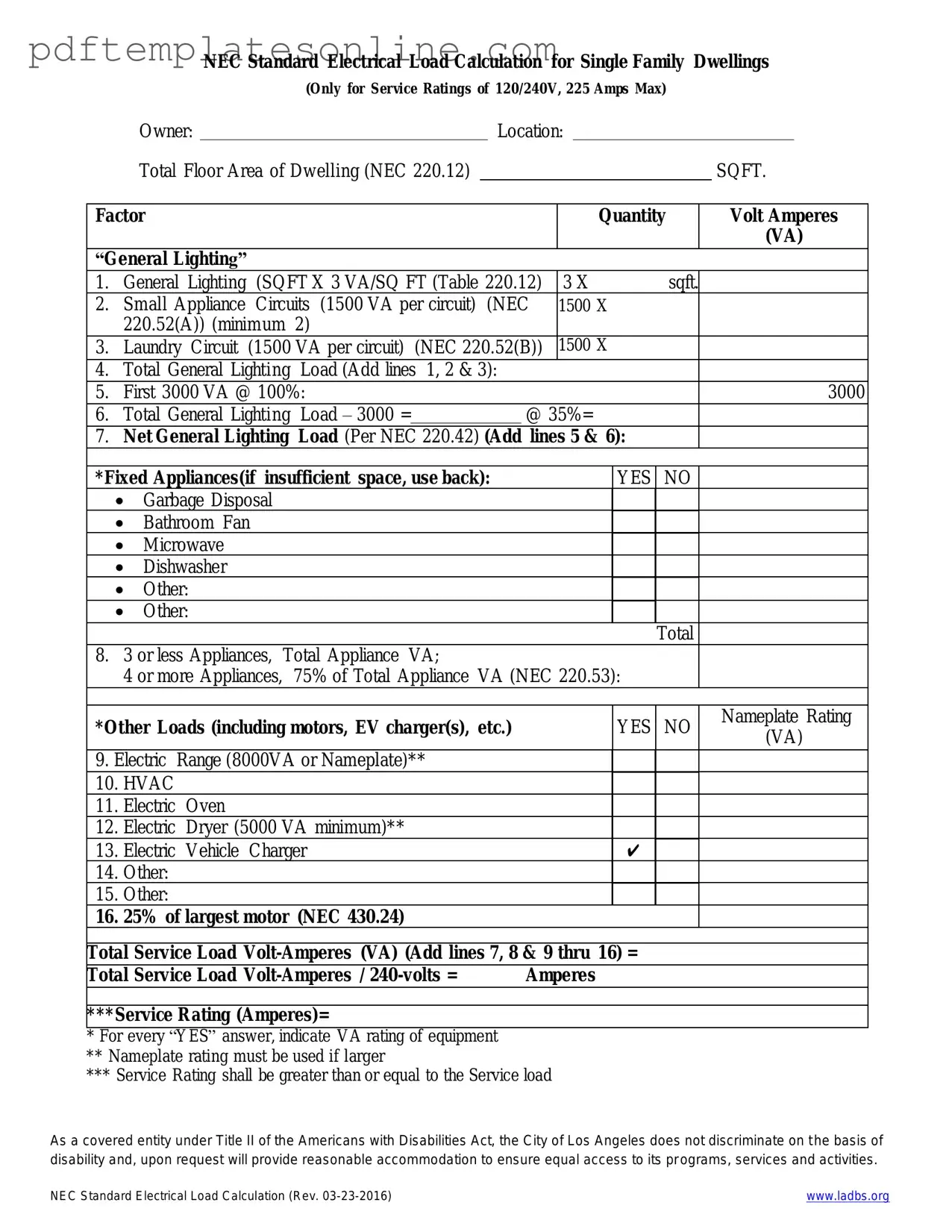Filling out the LADBS NEC Standard Electrical Load Calculation form can be a straightforward process, but many individuals make common mistakes that can lead to delays or even rejections. One frequent error is not including all necessary information. It’s essential to provide complete details about the electrical load, including all relevant appliances and systems. Omitting even a single item can result in an inaccurate calculation.
Another common mistake is miscalculating the load requirements. Many people underestimate the total load by failing to account for all devices that will be used simultaneously. It's crucial to remember that certain appliances, like air conditioners or electric water heaters, may require more power than initially assumed. Double-checking calculations can prevent potential issues down the line.
Inaccurate unit conversions often create confusion. Some individuals may switch between different units of measurement without ensuring they are consistent. For example, using watts instead of kilowatts, or vice versa, can lead to significant discrepancies in the final load calculation. Always stick to one unit of measurement throughout the form to maintain clarity.
Another mistake involves overlooking the requirements for different types of loads. The form requires specific calculations for residential, commercial, and industrial loads. Failing to identify the type of load correctly can lead to inappropriate calculations. Make sure to read the instructions carefully to categorize the load accurately.
Many people also neglect to verify the service rating of their electrical system. If the service rating is lower than the calculated load, it can create safety hazards and compliance issues. Always check that the service rating meets or exceeds the calculated load to ensure safety and adherence to local codes.
Additionally, using outdated or incorrect codes can lead to problems. Electrical codes can change, and it’s essential to use the most current version when filling out the form. Be aware of any updates or amendments to the NEC that may affect your calculations.
Another frequent oversight is failing to include the required signatures or certifications. The form typically requires the signature of the person completing it, as well as any necessary approvals from licensed professionals. Missing signatures can result in the form being deemed incomplete, causing delays in processing.
Finally, individuals sometimes submit the form without making a copy for their records. Keeping a copy of the completed form is crucial for future reference, especially if questions or issues arise later. Always maintain a record of your submissions to ensure you have the necessary documentation at hand.
